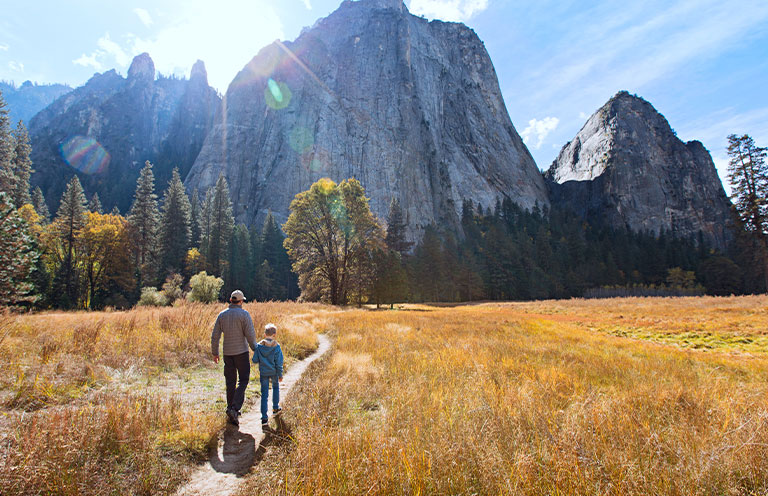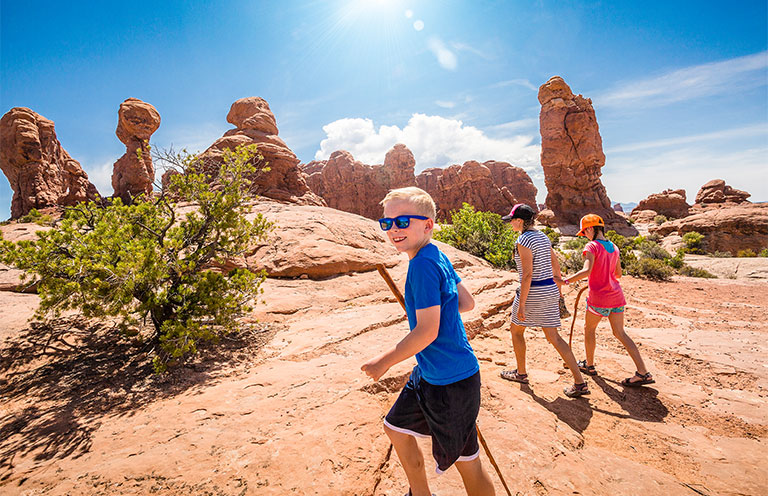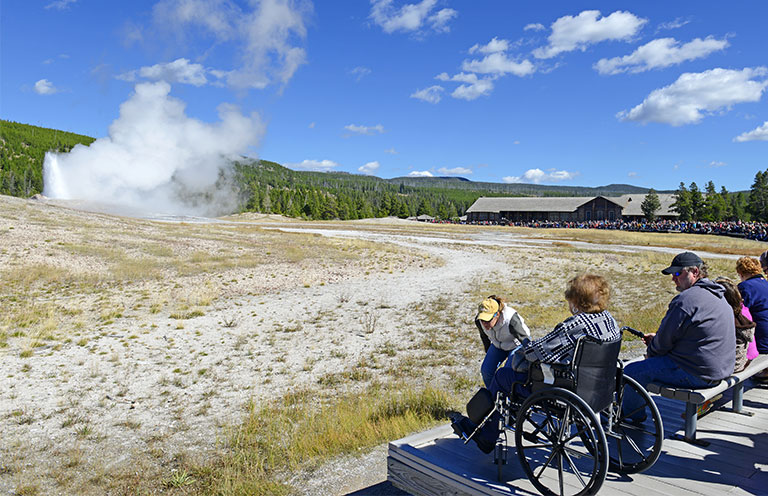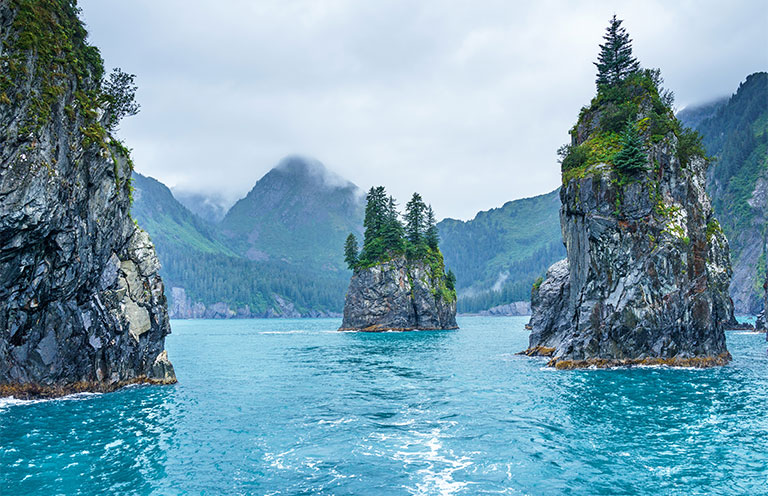5-Plus Ways to Visit Our National Parks for Free—Yes, Free!
Here’s how to visit any national park for free this year—plus, the 23 national parks that never charge an entrance fee


Our national parks are a gift, a treasure, and—in the now-famous words of naturalist Wallace Stegner—America’s best idea.
“Absolutely American, absolutely democratic, they reflect us at our best rather than our worst,” wrote Stegner in a letter to the National Park Service advocating for the continued preservation of precious public lands in 1983. A century earlier, in 1872, President Ulysses S. Grant signed the bill designating Yellowstone and its 2.2 million glorious acres as our nation’s first “public park…for the benefit and enjoyment of the people.”
Today, our country is home to 63 such national parks with vast, majestic landscapes where you can hike, bike, climb, camp, cave, swim, snorkel, fish, boat, bird, horseback-ride, stargaze, and much more. In 2024, nearly 320 million people visited our national parks and the hundreds of related sites (including national historical parks, recreation areas, monuments, and the like) in the National Park System, which comprises more than 85 million acres in all 50 states, DC, and US territories.

5 ways to get free admission to a national park
Most of our national parks charge an entrance fee—usually around $30 or $35 per private vehicle (which covers all passengers in the vehicle) or, if you enter on foot or by bicycle, typically $15 or $20 per person. (Children ages 15 and under are always admitted free, and the Senior Annual Pass and Senior Lifetime Pass offer deep discounts for those ages 62 and older.) But if you’re looking to visit a national park for free this year—and who isn’t?—here are five ways to enter through the gate at no cost. Yes, that’s zero, zilch, nada—not a dime nor a penny.
1. Visit on a free-entrance day.
Each year, the National Park Service waives entrance fees for everyone on a half-dozen designated days. While two of those six days—January 20, Martin Luther King Jr. Day, and April 19, the first day of National Park Week—are history for 2025, there are still four entrance-fee-free days to take advantage of this year:
- June 19, Juneteenth
- August 4, Great American Outdoors Act Signing Day
- September 27, National Public Lands Day
- November 11, Veterans Day
Each year’s free-entrance days are announced near the end of the year before they become effective, so look for news of free-entrance days for 2026 this December.

2. Bring your fourth-grader.
If you have a fourth-grader in your family, your family gets free access to all national parks, as well as other federal lands and recreational waters, as part of the Every Kid Outdoors program. After completing an online form, students can print a paper pass (each pass has a unique code) that grants them and their family members traveling with them access to hundreds of national parks, lands, and waters for an entire year—through August 31 this year. Educators can also generate passes for their students. Rising fourth-graders are eligible to receive their one-year passes at the start of the new school year in September.
3. Log volunteer hours.
It’s possible to turn your free time into a national parks pass. Volunteering at least 250 hours at a federal recreation site—including those not only managed by the National Park Service but also by the Bureau of Land Management, USDA Forest Service, US Army Corps of Engineers, and Bureau of Reclamation, Fish and Wildlife Service—will earn you a Volunteer Pass. And you don’t have to accrue all 250 hours in one year; in fact, you can rack them up over several years—or even longer. Once you’ve logged all 250 hours, you’ll receive a pass good for one year from the issuance. The clock is then reset to zero, and you can start volunteering your way to another annual pass when the first one expires.
4. Present your military ID.
While everyone can enjoy free park admission on Veterans Day to honor those who have served or are currently serving our country in the military, all veterans and US military service members and their dependents receive a free annual pass to every national park and related federal recreation sites. Active US reservists and military cadets qualify, too. There is also a special Military Lifetime Pass to honor Gold Star families as well as veterans, who can choose the annual pass or lifetime version.

5. Apply for an Access Pass.
Those with permanent disabilities are eligible for an America the Beautiful—the National Parks and Federal Recreational Lands Access Pass. Acceptable proof of a medically determined permanent disability (which needn’t be a 100 percent disability but rather “a permanent physical, mental, or sensory impairment that severely limits one or more major life activities”) along with proof of US citizenship or permanent residency are required. The free lifetime pass has no age requirement and is valid at all US national parks and related federal recreation sites. It also offers discounts at select parks on some amenities, such as camping, swimming, boat launching, and guided tours.

National parks that are free for all, all the time
If none of those scenarios applies to you, don’t worry about your wallet just yet: You can still enjoy a free visit to any of these 23 parks that never charge an entrance fee. And bonus: These are some of the best national parks to visit in the US and its territories thanks to their wealth of awe-inspiring natural wonders, fascinating history, and recreational opportunities aplenty.
- Biscayne National Park, Florida
- Channel Islands National Park, California
- Congaree National Park, South Carolina
- Cuyahoga Valley National Park, Ohio
- Gates of the Arctic National Park and Preserve, Alaska
- Gateway Arch National Park, Missouri
- Glacier Bay National Park and Preserve, Alaska
- Great Basin National Park, Nevada
- Great Smoky Mountains National Park, Tennessee and North Carolina
- Hot Springs National Park, Arkansas
- Katmai National Park and Preserve, Alaska
- Kenai Fjords National Park, Alaska
- Kobuk Valley National Park, Alaska
- Lake Clark National Park and Preserve, Alaska
- Mammoth Cave National Park, Kentucky
- National Park of American Samoa
- New River Gorge National Park and Preserve, West Virginia
- North Cascades National Park, Washington
- Redwood National and State Parks, California
- Virgin Islands National Park
- Voyageurs National Park, Minnesota
- Wind Cave National Park, South Dakota
- Wrangell–St. Elias National Park and Preserve, Alaska
. . . . .
Scores of other national historical parks, seashores, recreation areas, battlefields, monuments and more within the 433-unit—and counting—National Park System also offer free admission year-round. That means the most challenging part of your park planning may not be finding one to visit for free but rather finding the time to fit them all on your calendar. Happy park-hopping!
